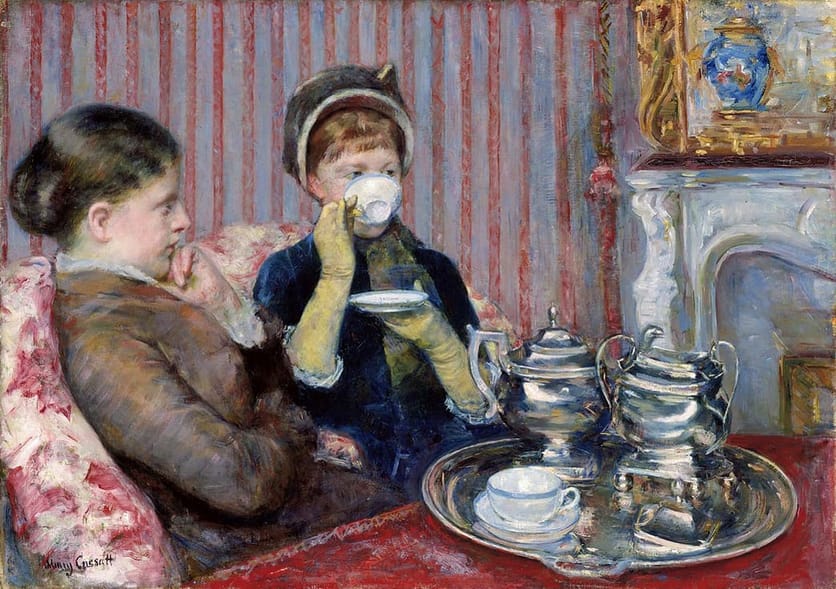American Impressionism was a style of painting related to European Impressionism and practiced by American artists in the United States during the late 19th and early 20th centuries. It was characterized by loose brushwork and vivid colors.
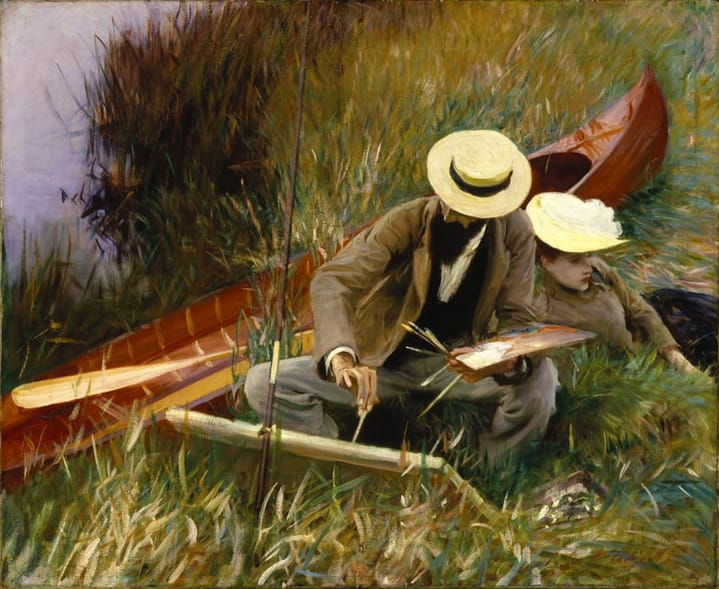
The Brooklyn Museum
An emerging artistic style from Paris
Impressionism emerged as an artistic style in France in the 1860s at the same time that a number of other painters, including the Italian artists known as the Macchiaioli, and Winslow Homer in the United States, were also exploring plein-air painting. The Impressionists, however, developed new techniques specific to the style. Encompassing what its adherents argued was a different way of seeing, it is an art of immediacy and movement, of candid poses and compositions, of the play of light expressed in a bright and varied use of colour.
Major exhibitions of French impressionist works in Boston and New York in the 1880s introduced the style to the American public. Some of the first American artists to paint in an impressionistic mode, such as Theodore Robinson and Mary Cassatt, did so in the late 1880s after visiting France and meeting with artists such as Claude Monet. Others, such as Childe Hassam, took notice of the increasing numbers of French impressionist works at American exhibitions.
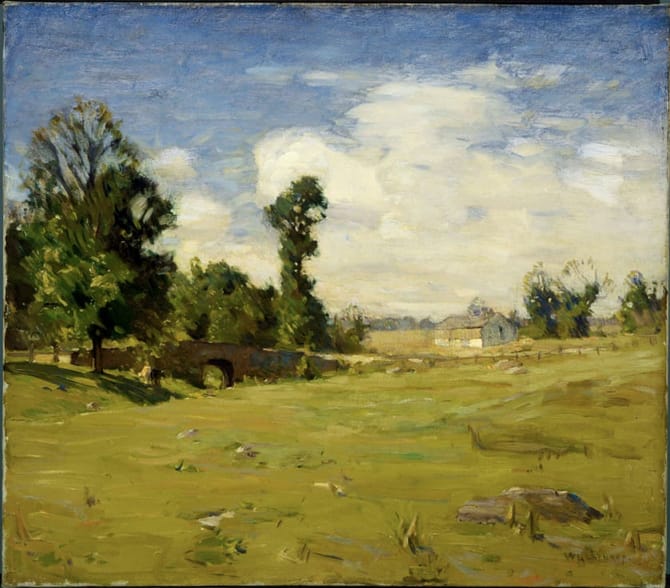
The Phillips Collection, Wash. DC
Radicals in their time, early Impressionists violated the rules of academic painting. They constructed their pictures from freely brushed colours that took precedence over lines and contours, following the example of painters such as Eugène Delacroix and J. M. W. Turner. They also painted realistic scenes of modern life, and often painted outdoors. Previously, still lifes and portraits as well as landscapes were usually painted in a studio. The Impressionists found that they could capture the momentary and transient effects of sunlight by painting outdoors or en plein air. They portrayed overall visual effects instead of details, and used short "broken" brush strokes of mixed and pure unmixed colour—not blended smoothly or shaded, as was customary—to achieve an effect of intense colour vibration.
The public, at first hostile, gradually came to believe that the Impressionists had captured a fresh and original vision, even if the art critics and art establishment disapproved of the new style.
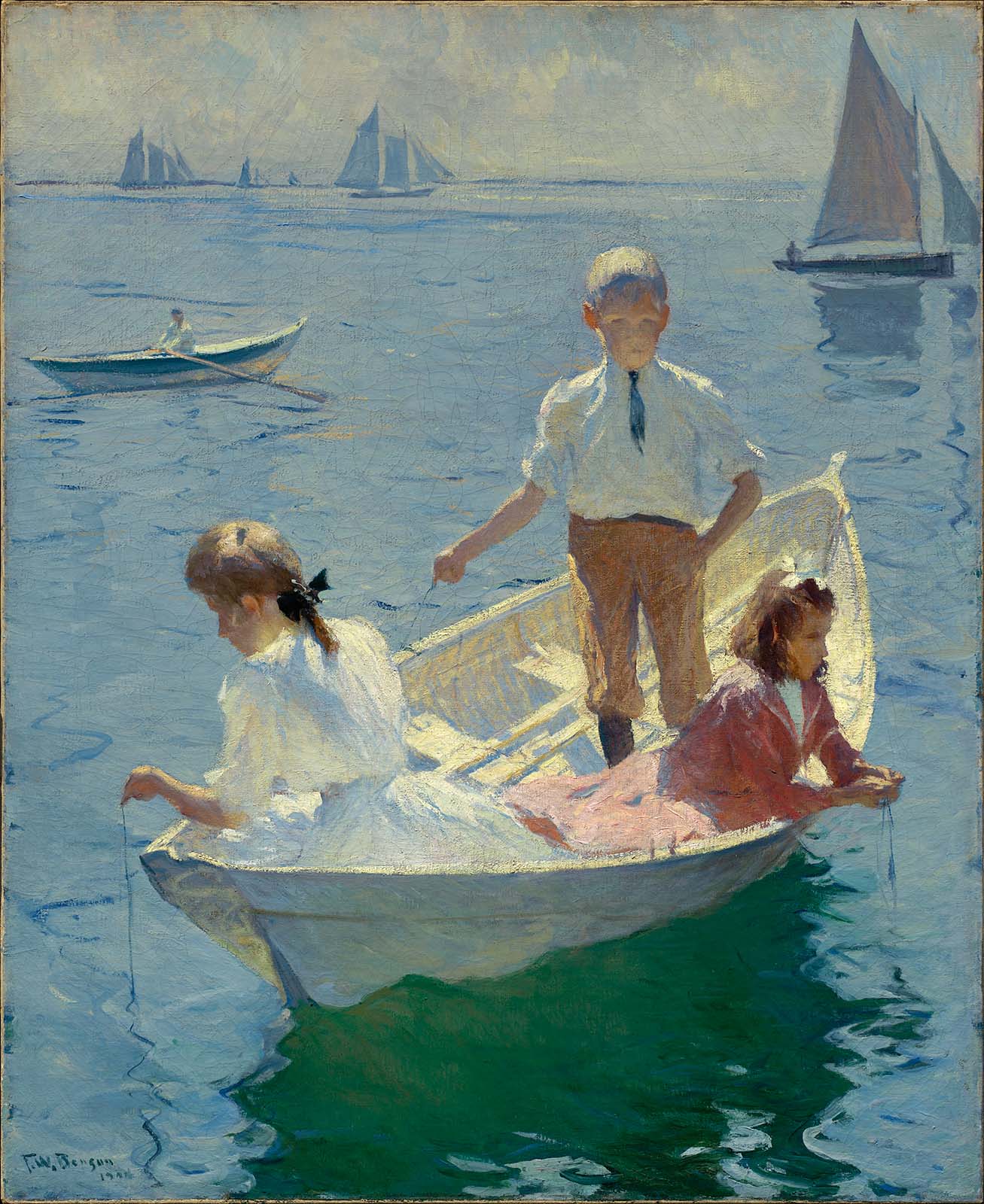
Museum of Fine Arts, Boston
Impressionism in The Industrial Age
As railroads, automobiles, and other new technology emerged, American impressionists often painted vast landscapes and small towns in an effort to return to nature. Before the invention of collapsible paint tubes artists were often confined to using subjects in their studios or painting from memory. With the invention of paint tubes in 1841 by artist John Goffe Rand, artists could transport their paint and easily paint in nature.
Trailblazers from the turn of the 20th century
From the 1890s through the 1910s, American impressionism flourished in art colonies—loosely affiliated groups of artists who lived and worked together and shared a common aesthetic vision. Art colonies tended to form in small towns that provided affordable living, abundant scenery for painting, and relatively easy access to large cities where artists could sell their work. Some of the most important American impressionist artists gathered at Cos Cob and Old Lyme, Connecticut, both on Long Island Sound; New Hope, Pennsylvania, on the Delaware River; and Brown County, Indiana. American impressionist artists also thrived in California at Carmel and Laguna Beach; in New York on eastern Long Island at Shinnecock, largely due to the influence of William Merritt Chase; and in Boston where Edmund Charles Tarbell and Frank Weston Benson became important practitioners of the impressionist style.
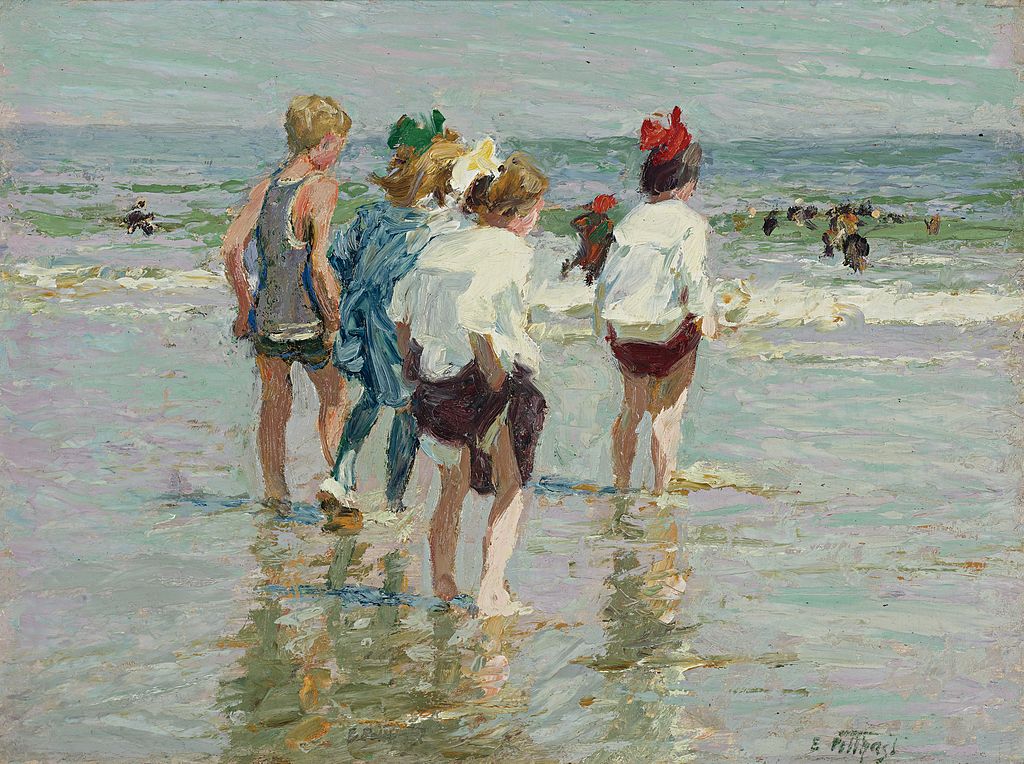
Location: Private Collection

Location: The Phillips Collection, Wash. DC
Jazz Age decline
Some American art colonies remained vibrant centers of impressionist art into the 1920s. However, impressionism in America lost its cutting-edge status in 1913 when a historic exhibition of modern art took place at the 69th Regiment Armory building in New York City. The “Armory Show”, as it came to be called, heralded a new painting style regarded as more in touch with the increasingly fast-paced and chaotic world, especially with the outbreak of World War I, The Great Depression and World War II.
Characteristics of American Impressionism
Unlike early Renaissance painters, American Impressionists favored asymmetrical composition, cropped figures, and plunging perspectives in their works in order to create a more "impressionist" version of the subject. In addition, American impressionists used pure color straight from the tubes to make the works more vibrant, used broken brushstrokes, and practiced "impasto"- a style of painting characterized by thick raised strokes. European impressionists painted tranquil scenes of landscapes or the lower and middle classes. American impressionists focused on landscapes like the European impressionists, but unlike their European counterparts, American impressionists painted scenes that depicted the upper class in an effort to show off America's economic prowess.

